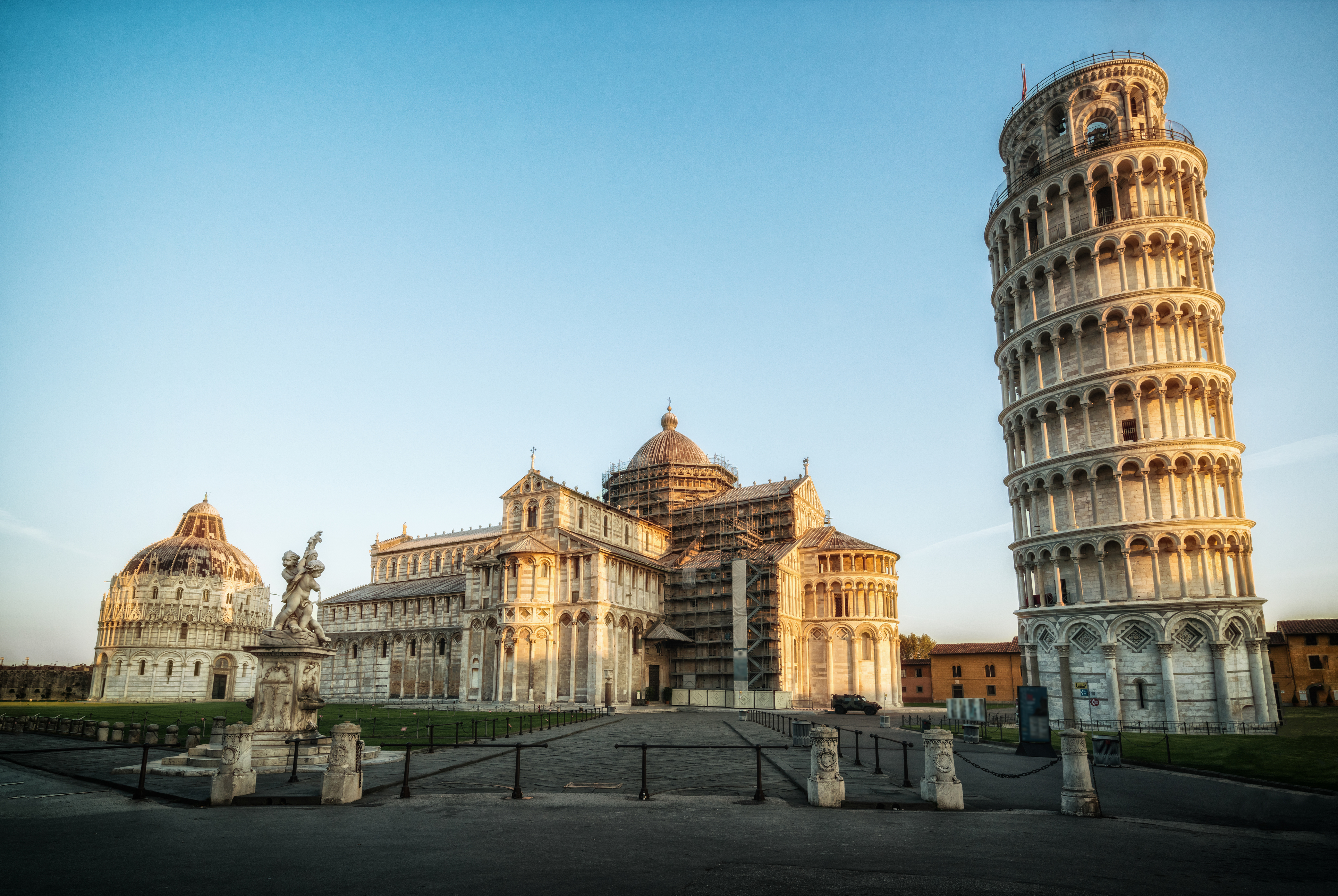
WHENEVER I speak to people about my travels to Pisa, my eyes light up. I have a real affection for this Tuscan city, home to one of Italy’s most famous landmarks.
Flying to Pisa is usually relatively cheap from Scotland. Tourists use Pisa as a gateway to other places, like the Tuscan hills and Florence and, more often than not, they’ll simply use Pisa as a base and explore further afield. Some say it’s unremarkable; I’d say it’s undiscovered.
Your first port of call has to be that famous landmark. Perhaps through ignorance, before I visited I didn’t realise that the Leaning Tower of Pisa doesn’t stand alone. It is part of the Piazza dei Miracoli – translated as Square of Miracles – declared a UNESCO World Heritage Site in the 1980s.
The other three buildings on the square represent the stages of human life: The Baptistery of St John represents birth, the Duomo of Santa Maria Assunta life, and the monumental cemetery implies death.
We purchased tickets directly from the Sinopie Museum which allowed us access to all of the main attractions, and a separate ticket with a time-slot to climb the Leaning Tower.
It was a bit smaller, inside and out, than I had expected but nonetheless it’s impressive as you climb towards the bells.
I was also taken by the camposanto (graveyard) and spent much of the afternoon studying ancient artworks and frescoes, the most notable being The Triumph of Death by Buonamico Buffalmacco.
Pisa is home to Italy’s top university, and so in term time the city is full of students, drinking beers in bars and cafes alongside the River Arno, making the nightlife here some of the liveliest in Italy. The university buildings are tourist attractions in themselves, especially the Piazza dei Cavalieri, a wide square which was once home to the Roman Forum, and now houses the university library and some academic buildings. Keep an eye (and ear!) out for festivals going on in and around this area.
The best time, for me, is around 6pm, when office workers and families flock to cafes and bars for apertivo, my favourite Italian tradition. Bars serve trays of tiny sandwiches, olives, meats and cheeses with your drinks order. This is meant to prepare you for dinner (which Italians tend to eat later than us, around 8 or 9pm) and allows people to come together for a chat after a long day in the office. Oh how I wish we’d adopt this tradition in Scotland!
You’re completely spoiled for choice when it comes to food. Italians have lengthy, wine-sloshed dinners with at least four courses.
We were treated to this nightly at our hotel situated just on the outskirts of Pisa in San Giuliano Terme, Bagni di Pisa, a five-star spa resort that used to be the Grand Duke of Tuscany’s spa residence.
We enjoyed dishes like smoked goose carpaccio with pistachio pesto, tortelli stuffed with shrimp, almond and potato, and delicious sweets, my favourite being the chocolate sable with passionfruit, not to mention abundant glasses of regional wine that were paired with it.
We spent some time in and around the hotel, which was completely beautiful and fascinating.
When it was the Duke’s home, literary figures such as Mary Shelley and Lord Byron visited and, to this day, it is popular with the well-known: Bob Dylan, Stevie Wonder and the Dalai Lama are just a few famous guests to have stayed in the comforts of this stunning residence, sleeping under the detailed frescos on the ceilings that are still there today. I can now say that I too have slept underneath an original 18th Century work of art, just like the Dalai Lama!
Expect to be treated as exceptionally well as the five-star status would suggest, from the personal guided tour around the spa to the knowledgeable restaurant manager Francesco Cotza, who spent real time with us at dinner, poring over the delicious menu and helping us choose between the dishes, and the wines.
I feel like even though it’s well known, and much visited, tourists have yet to unlock Pisa’s true potential and, for me, that lies way beyond the Leaning Tower. Visit, and discover it for yourself.

Enjoy the convenience of having The Sunday Post delivered as a digital ePaper straight to your smartphone, tablet or computer.
Subscribe for only £5.49 a month and enjoy all the benefits of the printed paper as a digital replica.
Subscribe